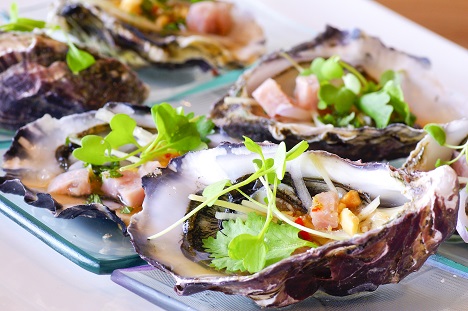South Australia will do well despite Tasmanian woes

by Leon Gettler
South Australian fish mongers are confident that the state’s oysters will continue to do a roaring trade, despite the virus which has devastated Tasmanian oyster farms.
The Pacific Oyster Mortality Syndrome (POMS) virus killing oysters on Tasmanian farms is harmless to humans. But it is particularly harmful to baby oysters, or spats.
It is estimated that 70 per cent of Tasmanian oysters will die, and that interstate prices will rocket from about $14 to $20 a dozen.
South Australian fish retailers says it’s a problem for Tasmania and Victoria but not South Australia because the state has a good supply with oysters coming from the oyster farm belt in the waters of Eyre and Yorke peninsulas and Kangaroo Island.
As a result, South Australian oysters will keep selling for an average $12-$15 for a dozen, depending on their size and variety.
South Australian fish monger Michael Angelakis, who also owns an oyster farm at Lower Pitt Water, on the east coast of Tasmania, says that South Australia’s abundant supply of oysters will give it an ample buffer from POMS.
“We’ll be all right in SA for at least two to three seasons,” Mr Angelakis told the Adelaide Advertiser.
“What might happen is that Victoria and NSW will be looking more to South Australia instead of Tasmania for supplies, putting pressure on our farms, but the oyster market here is strong.”
He said that while South Australian fish mongers use Tasmanian spat they are supplied from thriving hatcheries in Coffin Bay and Louth Bay on the Eyre Peninsula. Add to that the new farming methods and non-spawning triploids filling the gaps.
Mr Angelakis said the situation for Tasmanian was uncertain because the POMS virus “will always be there”.
For now, he said, the state was “well stocked”.
There is even talk of South Australia’s oyster supply turning the state into a key market, particularly with Tasmania in trouble.
23rd March 2016







